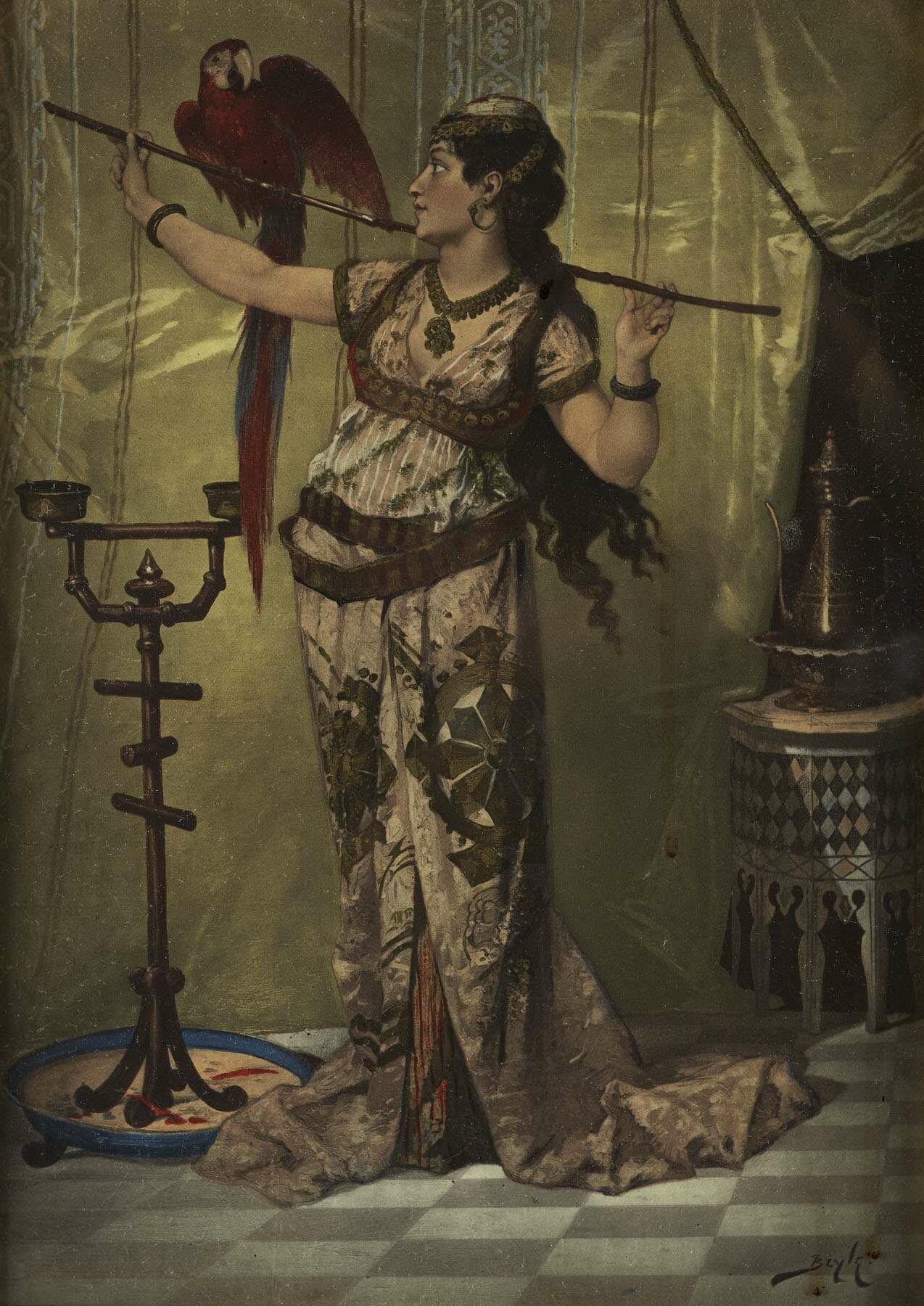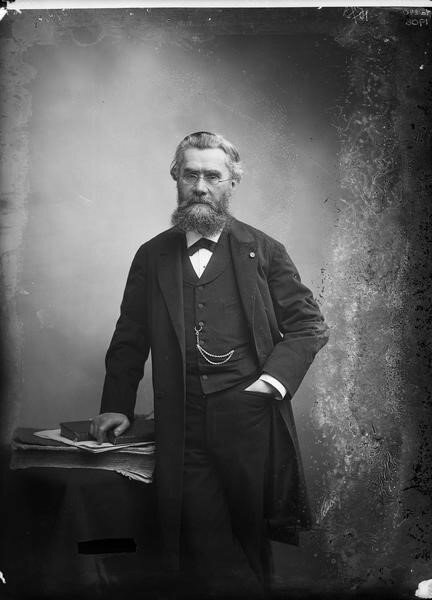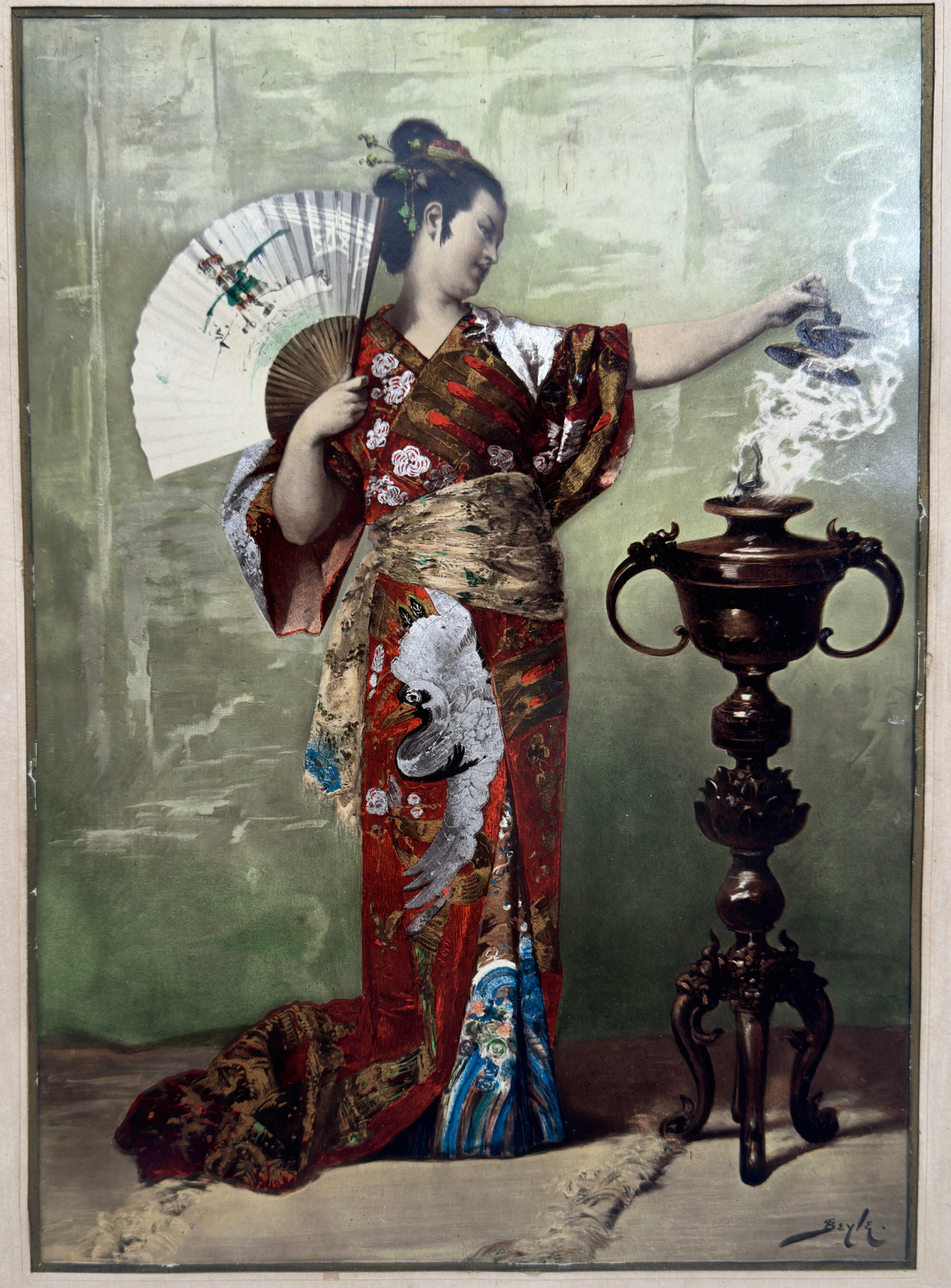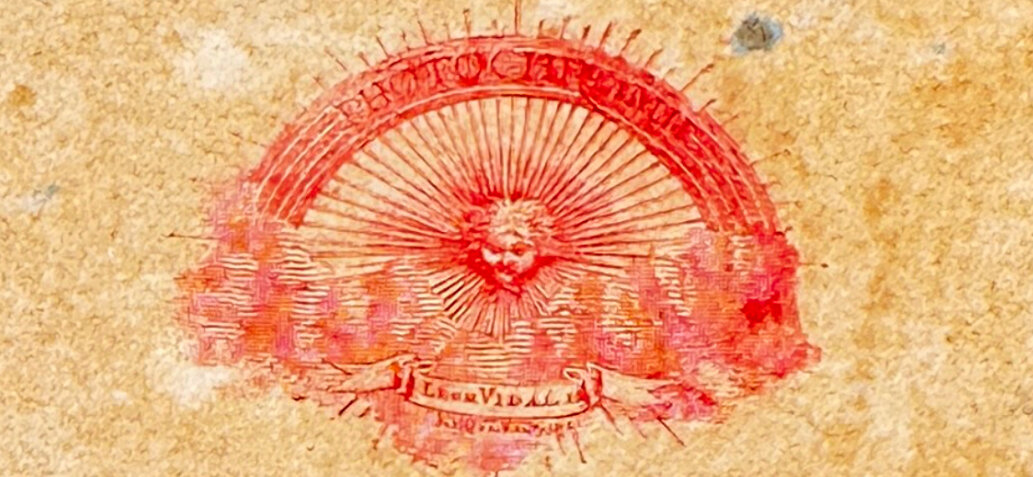June 19, 2024
Leon Vidal Photochromie : A Japanese Woman with a Parasol (Pierre Marie Beyle), late C19th
Art and artistry combine in this striking photographic reproduction of a painting by the French artist Pierre Marie Beyle (1838-1902) produced by the ‘Photchromie’ printing process invented and perfected by the French photographer Leon Vidal (1834-1906).
Leon Vidal developed the photochrome printing process in the 1870s as a method of accurately colouring photographs for quantity reproduction. From the original negative a number of copy negatives were made, on glass or thin paper. On each negative, those areas which were not to be coloured were blocked out with an opaque medium. For example, on the negative prepared for the colour blue, only those areas to be coloured blue in the final print remained uncovered. Negatives were prepared for as many colours as required, up to twelve, and then used to make lithographic tint plates which were employed to transfer colours in succession to the monochrome photograph from the original negative.
‘Photochromie’, as the photochrome printing process was called, was patented in 1872 and 1874 and refined by Vidal in the studios of the Société Anonymes des Publications Périodiques, whose director he became in 1875. This Société was founded in 1869, initially for a period of 60 years, and its first major publication, announced in 1878, was a lavishly illustrated book entitled ‘Le Trésor artistique de la France’ in which the French heritage in the arts was represented by thirty nine specially selected items of particular cultural and artistic merit, each described by an expert in the field and all illustrated, a few in monochrome and the bulk, thirty in all, in colour employing the newly discovered photochromie process. The results were unfortunately uneven and the cost of the volume, three hundred francs, prohibitively high which resulted in the first volume of a proposed series being its last. Individual plates from this publication appear on the market today and are sought by collectors.


Less commonly seen are individual representations of contemporary paintings which Vidal also produced in the studios of the Société at its premises, 13 Quai Voltaire, Paris. Vidal’s printing process was not the only one available to the French public in the late nineteenth century but it was probably the most accomplished and Vidal sought to exploit this by issuing a series of reproductions suitable for interior decoration. Most popular amongst the artists whose work he chose to reproduce seems to have been Pierre Marie Beyle (1838-1902).
Beyle was born in Lyon in 1838 and studied in Paris where he later exhibited regularly at the Salon, from 1867 to 1900. Around 1870, he went to Algiers and the themes of the city are reflected in his paintings of those years. Later he became known for landscape and genre scenes many of which depict the suuroundings of Normandy where he used to spend his summers and in addition he followed the contemporary fascination with the Orient producing paintings with themes from the Far East such as we have here. Beyle also worked as a caricaturist in satirical newspapers such as the Petit Journal, the Fun Journal and Bouffon in the 1860s and 1870s. He exhibited at the Grafton Gallery in London in 1881, then went to Scotland where he exhibited at the Institute of Fine Arts in Glasgow. In 1900, he exhibited at the Universal Exhibition. After settling in Chennevieres-sur-Marne towards the end of his life he died in Paris in 1902 and was buried at Montparnasse.
The rich palette of colours employed in Beyle’s paintings were well suited to reproduction by Vidal’s newly invented printing process and he doubtless chose those works which he felt would have a particular popular appeal. The rage for ‘Japonisme’ in the second half of the nineteenth century is well documented and its influence was widely spread, perhaps most famously in David Belasco’s play ‘Madame Butterfly’ which inspired Puccini’s opera of the same name. The Geisha figure here fortunately holds a fan rather than a sword and is seen gazing at an elaborate bronze incense burner. The elaborate colours of her robe are well reproduced by the ‘Photochromie’ technique and the whole composition has a richness of presentation which doubtless reflects the original painting which appears still to be in the private domain. Beyle’s signature is accurately reproduced at the bottom right and Vidal’s invention is proudly announced on the reverse with the sun inspired emblem at the top and the wording below ‘Photochromie’ ‘Photographie en Couleurs’ ‘sans le secours du pinceau’. No hand colouring here! The modern frame acts acts as complement to the image and both combine to present a highly decorative picture of considerable cultural interest.

